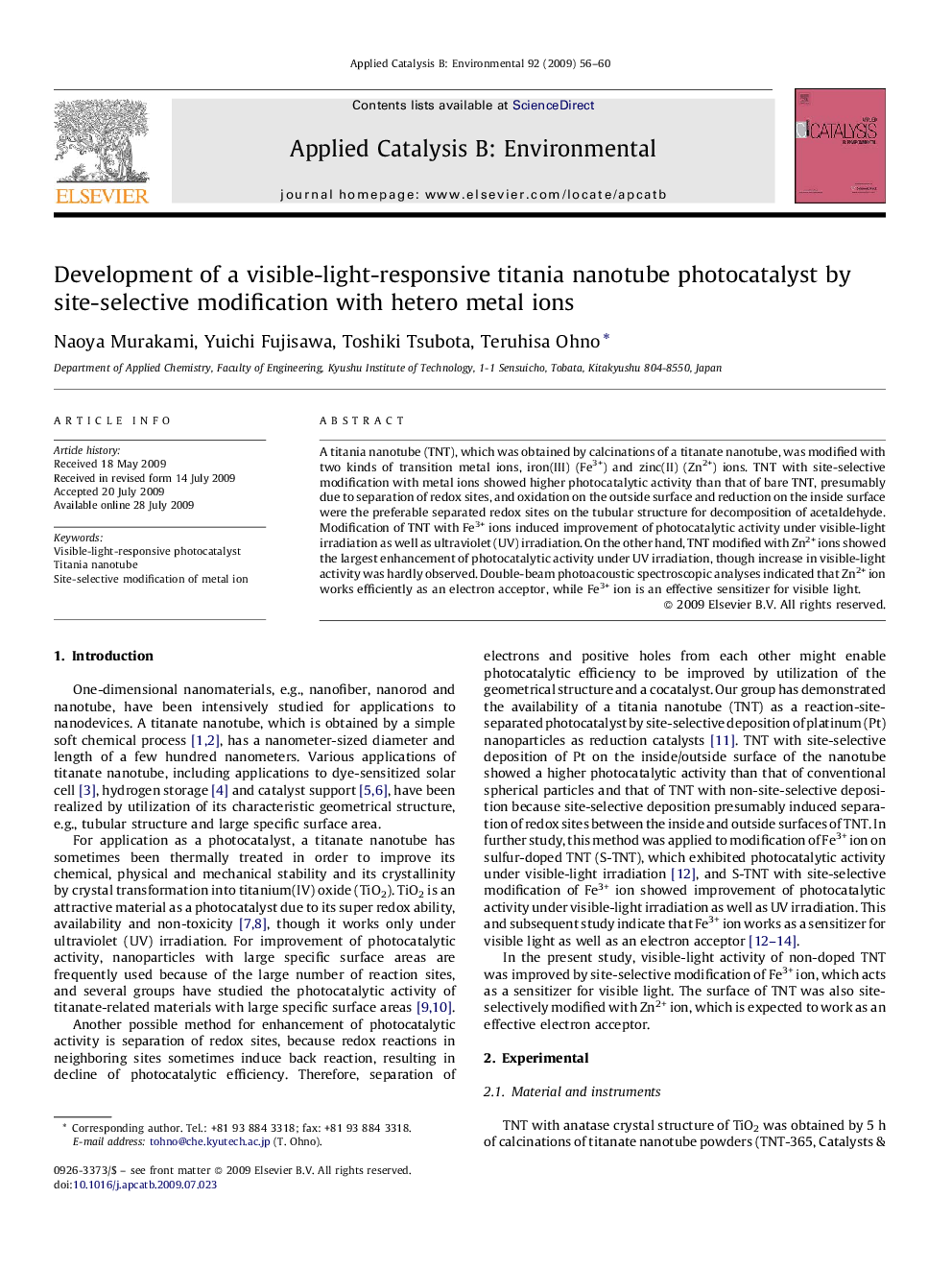| کد مقاله | کد نشریه | سال انتشار | مقاله انگلیسی | نسخه تمام متن |
|---|---|---|---|---|
| 47514 | 46474 | 2009 | 5 صفحه PDF | دانلود رایگان |

A titania nanotube (TNT), which was obtained by calcinations of a titanate nanotube, was modified with two kinds of transition metal ions, iron(III) (Fe3+) and zinc(II) (Zn2+) ions. TNT with site-selective modification with metal ions showed higher photocatalytic activity than that of bare TNT, presumably due to separation of redox sites, and oxidation on the outside surface and reduction on the inside surface were the preferable separated redox sites on the tubular structure for decomposition of acetaldehyde. Modification of TNT with Fe3+ ions induced improvement of photocatalytic activity under visible-light irradiation as well as ultraviolet (UV) irradiation. On the other hand, TNT modified with Zn2+ ions showed the largest enhancement of photocatalytic activity under UV irradiation, though increase in visible-light activity was hardly observed. Double-beam photoacoustic spectroscopic analyses indicated that Zn2+ ion works efficiently as an electron acceptor, while Fe3+ ion is an effective sensitizer for visible light.
Journal: Applied Catalysis B: Environmental - Volume 92, Issues 1–2, 19 October 2009, Pages 56–60